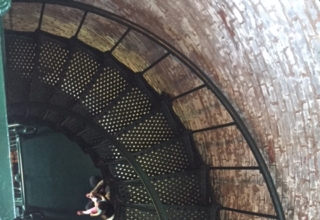
Emphasis is thus placed not on identifying or producing a great leader (as in the premodern society), but on constructing a great system. Those who head modern organizations typically define themselves as managers rather than leaders. They are to manage and be worthy stewards of the great system that has been created by other people (the nameless and faceless designers of bureaucracies). Modern authority is expressed through the autonomy of rules, regulations, roles and organizational structures.
Those who reside in postmodern societies, with economies based on digital communication and commerce call both the premodern and modern notions of leadership into question. They make sense of postmodern leaders by considering these men and women to be neither inherently great nor merely a product of a great system or bureaucracy. Greatness in a postmodern society involves interaction and great alignment between potentially great people and a potentially great system.
Effective postmodern leadership can be found at any level of an organization. Engaged leaders are effective as they exemplify Rorty’s notion of contingency: leadership can be effectively exerted and will be influential if applied at the right time, in the right place, in the right manner, and with regard to the right problem or goal. This contextual and contingent model of leadership requires careful consideration of both individual and organizational character and style. It also requires a tolerance for ambiguity, recognition of the need for one to learn from his or her mistakes, and a clear sense of personal aspirations.
________
References
Argyris, C. (1982) Reasoning, Learning, and Action: Individual and Organizational. San Francisco: Jossey-Bass.
Argyris, C. and Schon, D. (1974) Theory in Practice: Increasing Professional Effectiveness. San Francisco: Jossey-Bass.
Berger, P., & T. Luckmann (1966). The social construction of reality. New York: Doubleday.
Christian, D. and W. McNeill (2004) Maps of Time: An Introduction to Big History. Berkeley, CA: University of California Press.
Friedman, T. (2007) The World is Flat. 3.0 New York: Picador/MacMillan.
Gladwell, M. (2002) The Tipping Point. New York: Little, Brown and Co.
Kanter, R. M. (1990) When Giants Learn to Dance. New York: Free Press.
Kauffman, S. (1991) Antichaos and Adaptation. Scientific American. August, 1991, pp. 78-84.
Kauffman, S. (1996), At Home in the Universe: The Search for the Laws of Self-Organization and Complexity. New York: Oxford University Press.
Kegan, R. (1994) In Over Our Heads: The Mental Demands of Modern Life. Cambridge, MA: Harvard University Press.
Lippitt, R., J. Watson and B. Westley (1958) Dynamics of Planned Change. Orlando, FL: Harcourt Brace Jovanovich.
Miller, J. and S. Page (2007) Complex Adaptive Systems. Princeton NJ: Princeton University Press.
Parsons, T. (1955) Socialization and Interaction Process. Glencoe, IL: Free Press.
Rogers, E. (2003) Diffusion of Innovation (5th Ed.) New York: Free Press.
Rorty, R. (1989) Contingency, Irony & Solidarity. Cambridge, England: Cambridge University Press.
Schön, D. (1983) The reflective practitioner. New York: Basic Books.
Senge, P. (1990) The Fifth Discipline. New York: Doubleday.
Smick, D. (2008) The World is Curved: Hidden Dangers to the Global Economy. New York: Portfolio/Penguin.
Stacey, R. (1996) Complexity and Creativity in Organizations. San Francisco, CA: Jossey-Bass.
Taleb, N. N. (2010) The Black Swan: The Impact of the Highly Improbable. New York: Random House.
Vaill, P. (1989) Managing as a Performing Art: New Ideas for a World of Chaotic Change. San Francisco: Jossey-Bass.
Wheatley, M. (2006) Leadership and the New Science: Discovering Order in a Chaotic World (3rd Ed.) San Francisco: Berrett-Koehler.
Download Article















